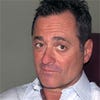Intel Decides Two Heads Better Than One
Intel's board sees synergy in replacing outgoing CEO Paul Otellini with two execs. Is the duo up to the formidable challenge ahead?

When Brian Krzanich and Renee James, the newly appointed CEO and President of Intel, respectively, take over for the retiring Paul Otellini in two weeks, they won't have to look far for things that need tending. Indeed, they will have to hit the ground running to lead Intel through what is arguably the most treacherous patch the company has encountered in its 45-year history.
The CEO and President titles were first consolidated under Otellini, and the new appointments reverse that move. In other ways, however, the board is preserving the shape of the Otellini executive suite by appointing Krzanich and James. Otellini, an economics major and an MBA, was the first CEO of the engineering company without a technical background. He was softer spoken, more strategically minded and more of a consensus builder than many others who have succeeded in Intel's in-your-face culture.
Krzanich is softer spoken even than Otellini, though he does re-inject an engineering background into the top office. He's also considered a strategic thinker, as is James. And while she doesn't have a technical degree, her role as head of the Software and Services Group has given her insight into the evolving industry direction that complements Krzanich's more traditionally Intel-centric vantage point.
Many had expected Krzanich to get the nod for CEO, so his appointment wasn't a surprise. What is surprising is not so much that James was appointed President. Rather, that the board had decided to package the two appointments, a signal that it sees value not only in the two individuals but in the combination.
Hopefully for Intel, the duo is up to the formidable challenge ahead. Intel's core PC client and server businesses are increasingly at risk as smartphones and tablets re-shape computing. That is forcing Intel to re-design itself and its products while at the same time having to contend with a rush of new competition.
The sputtering PC market is making matters even more urgent. Lackluster sales aren't really Intel's fault, but it is Intel's problem. The Ultrabook initiative, which Otellini introduced three years ago, was initially a Windows platform response to the MacBook Air, though the company has deftly adapted the vision to address the rapidly growing threat from tablets.
And next month, Haswell, the first Intel processor designed from the ground up for the Ultrabook vision, will be brightening the PC scene. (Sandy Bridge and Ivy Bridge chips, the second- and third-generation Core processors, respectively, were already well under construction when the initiative was announced, though engineers were able to tune the designs to match better with the strategy of enabling sleeker, sexier notebook PCs.) Haswell, the 4th-generation Core processor family, promises better performance than the previous generation, but with twice the battery life. That's going to yield some pretty impressive systems, which will start coming to market this summer.
That's a bright spot, although admittedly not as bright as it could have been had Microsoft not botched the Windows 8 rollout so badly. When a market is under attack, the best thing an incumbent has going for it is inertia. Microsoft shot PC shipments in the foot for the summer of 2012 when it rolled out Windows 8 near Halloween instead of Independence Day. And then it stalled sales ever since by forcing users to adapt to Windows 8's new interface rather than letting them do things the old way and gradually build a taste for Modern UI.
Inertia is a double-edged sword, however. Yes, it can provide cash to fund the next move. On the other hand, it can be more difficult to motivate the troops to cultivate new fields when they're still being fed by the last one. So if there's a silver lining to the sorry state of the PC market today, I guess you could say it's that.
Krzanich got his start at Intel in 1982, the year after IBM rolled out the first PC. You could argue that he came on during the first chapter in IBM's crash, when it let everyone take from them the PC business that it spawned. It is a story that has become a model for how to botch technology transitions. (Of course, IBM later became a model of how to transition from a hardware focus to a services focus.) You could also say that Krzanich began his ascension at Intel at the start of the Wintel era.
If the past year has shown us anything, it is that Microsoft didn't learn from the IBM case study. Has Intel? While you can't categorize every move the company has made as an unqualified success, you can at least say that the company is more aware of the hazards in this evolving environment. And, at least the board believes, it is installing the right combination in the executive suite to make it through.
About the Author(s)
You May Also Like
How to Amplify DevOps with DevSecOps
May 22, 2024Generative AI: Use Cases and Risks in 2024
May 29, 2024Smart Service Management
June 4, 2024







